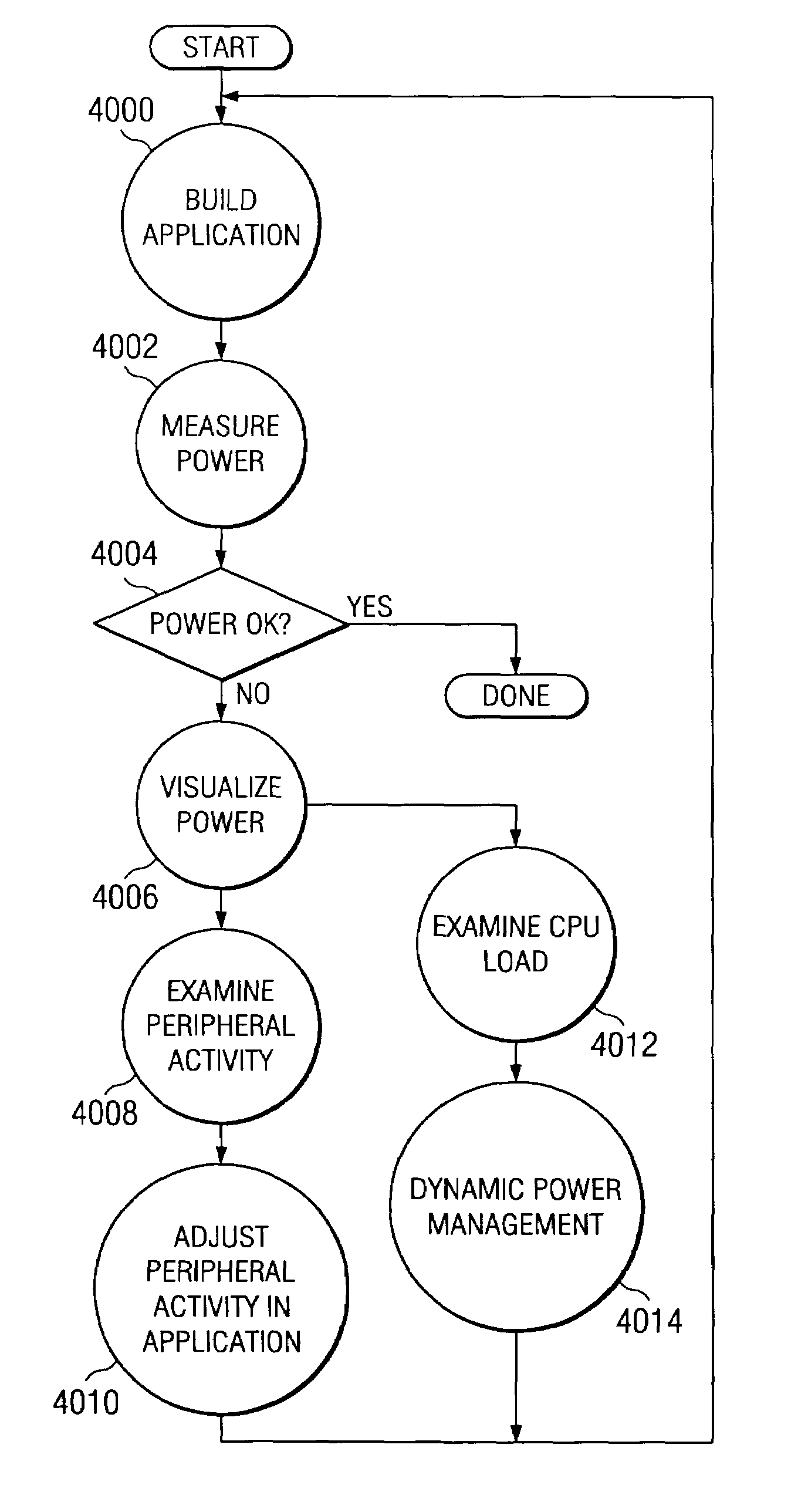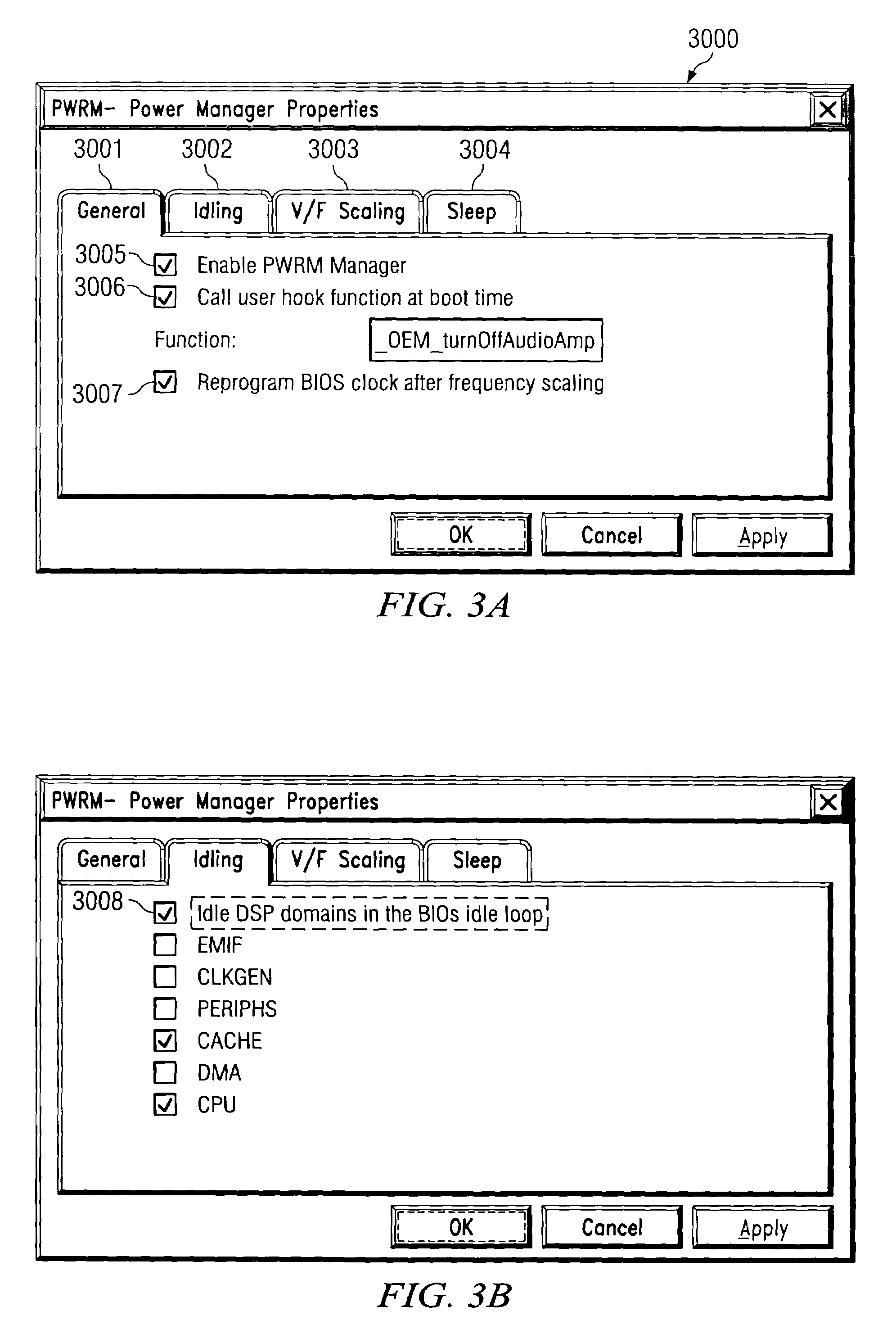For example, a designer may be limited by the number of processors that can be placed on a board simply because the cumulative
power consumption would exceed compliance limits for the
bus specification.
Active power consumption is caused both by switching current (that needed to charge internal nodes), and through current (that which flows when both P and N-channel transistors are both momentarily on).
Static power consumption occurs even when the circuit is not switching, due to reverse-bias leakage.
However, new higher-performance transistors are bringing significant boosts in leakage currents, which requires new attention to the static power consumption component of the total power equation.
Table 3 lists some fundamental challenges to utilizing these
power management techniques in real-time systems.
This “interval-basedscheduling” technique improves on the power-savings of the previous staticbenchmarking technique because it takes
advantage of the dynamic variability ofthe application's
processing needs.Dynamically schedule CPUThe “interval-based scheduling” technique enables dynamic adjustments tofrequency and voltage toprocessing capacity based upon history data, but typically does not do well atmatch predicted work loadanticipating the future needs of the application, and is therefore not acceptable forsystems with hard real-time deadlines.
Inability to fully characterize an application usually limitsthe general applicability of this technique.
However, in manycodesituations the speed may be good enough, and further optimizations are notconsidered.
Additionally, because of data
bus linecapacitances and the inter-
signal capacitances between
bus lines, the amount ofpower required is affected by the
data patterns that are transferred over the databuses.
Asimilar technique can be employed in battery-only systems, where a battery monitordetects reduced capacity, and activates more aggressive power management, suchas slowing down the CPU, not enabling image viewing on the
digital camera's LCDdisplay, etc.
The peripherals may need to be reprogrammed beforeand / or after the scaling operation, and this may be difficult if a pre-existing (nonpower-aware) device driver is being used to manage the
peripheral.
An application that runs fine on one platform may not be portable todependentanother platform, and may not run on a revision to the same platform if thelatencies change much.
For example, the time for a down-voltage scalingoperation is typically load-dependent, and if the load changes significantly on therevised platform the application may not run correctly.Might not have stableSome processor vendors specify a non-operation sequence during voltage oroperation during V / F scalingclock frequency changes to avoid instabilities during the transition.
In thesesituations, the scaling code will need to wait for the transition to occur beforereturning, increasing the scaling latency.V / F scaling directly affectsChanging CPU frequency (and voltage when possible) will alter the executionability to meet deadlinestime of a given task, potentially causing the task to miss a real-time deadline.Even if the new frequency is compatible with the deadline, there may still be aproblem if the latency to switch between V / F setpoints is too big.Scaling the CPU
clock canIf the clock that feeds the CPU also feeds the OS
timer, the OS
timer will beaffect ability to measure CPUscaled along with the CPU, which compromises measurement of CPU utilization.utilizationWatchdogs still need to beWatchdog timers are used to detect abnormal
program behavior and eitherkept happyshutdown or
reboot a system.
Power managementtechniques that slow down or suspend
processing can therefore inadvertentlytrigger application failure.Idle and sleep modesDepending upon the processor and the debug tools, invoking idle and sleep modestypically collide withcan disrupt the transport of real-time
instrumentation and debugging informationemulation, debug, andfrom the target.
In the worst case it may perturb and even
crash the debuginstrumentationenvironment.
Similar concerns arise with V / F scaling, which may cause difficultyfor the emulation and debug circuitry.
Also, if a module is powered down itmay be difficult (and sometimes not possible) to fully restore the internal state ofthe module.Most advanced powerMany of the research papers that demonstrate significant power savings use highlymanagement techniques arespecialized application examples, and do not map well to general application cases.still in the research stageOr, they make assumptions regarding the ability to fully characterize an applicationsuch that it can be guaranteed to be schedulable.
Also, different applications running on the same platform may havedifferent techniquesdifferent processing requirements.
 Login to View More
Login to View More  Login to View More
Login to View More 


